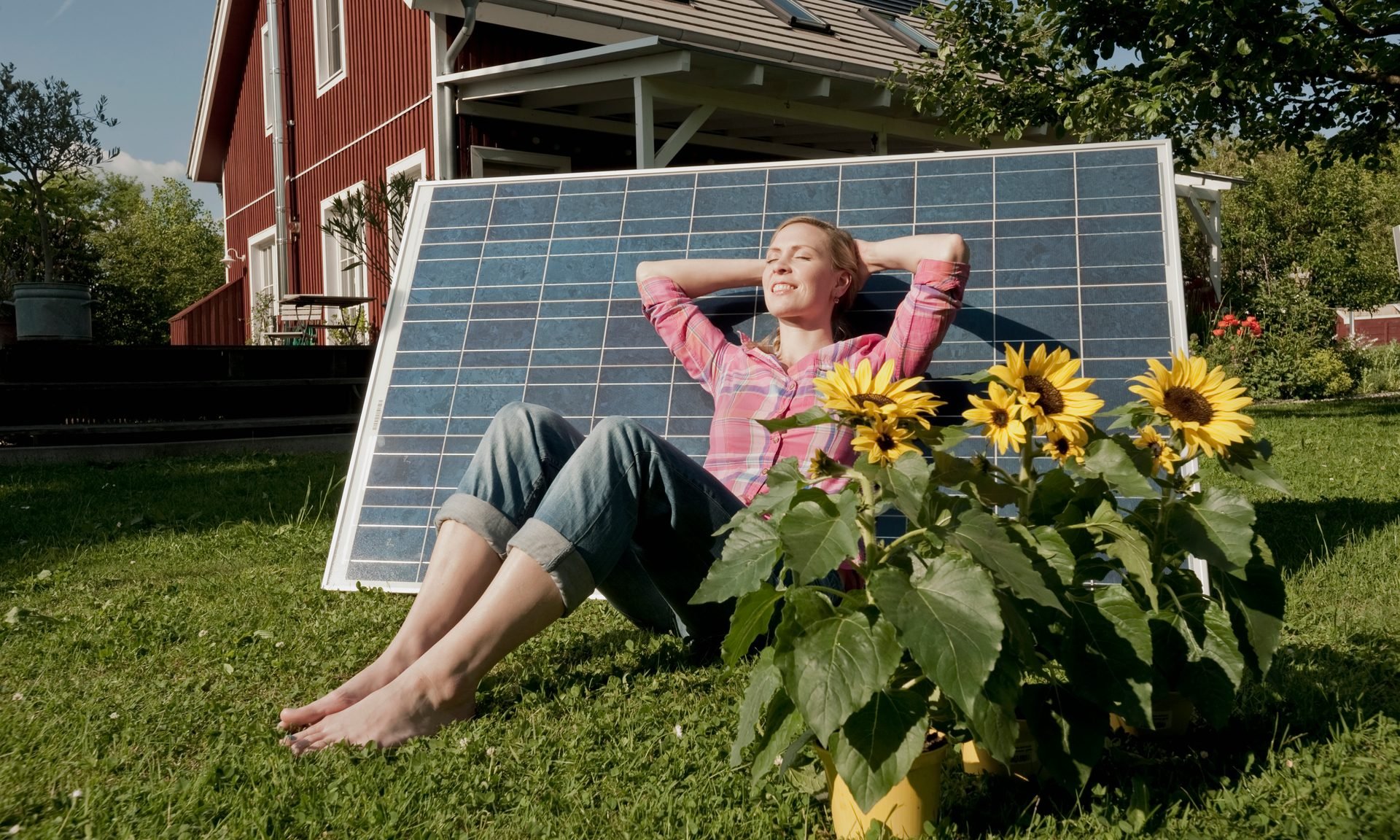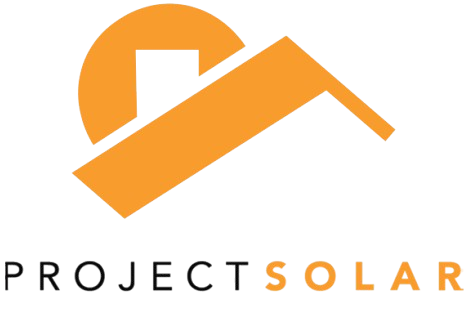Solar Shingles vs. Solar Panels
Solar shingles are less noticeable and easier to put on the roof, but they cost more and can be less efficient.

Some or all of the mortgage lenders featured on our site are advertising partners of NerdWallet, but this does not influence our evaluations, lender star ratings or the order in which lenders are listed on the page. Our opinions are our own. Here is a list of our partners.
The main difference between solar shingles and solar panels is the way they’re mounted. Solar panels are mounted on a roof (or the ground), while solar shingles do double duty as rooftop shingles. Solar shingles generate electricity the same way solar panels do.
How solar shingles work, what they’re made of and how they’re installed
Solar shingles work the same way solar panels do, but solar shingles look like and function as traditional roof shingles. This means they serve a dual purpose: to generate electricity and to protect your home from the elements.
Solar shingles can be made of silicon (the oldest and one of the most popular options) or copper indium gallium (CIGS).
Here’s how solar shingles (and solar panels) generate electricity:
- The solar shingles are exposed to sunlight.
- They transform that solar energy into direct current (DC) electricity.
- The DC current flows into a solar inverter, which converts the DC electricity into grid-compatible alternating current (AC) electricity.
- You can then use the AC electricity in your home, store it in a solar battery or send the excess to your local utility via net metering.
» MORE: Do solar panels work at night?
You can have only solar shingles for a roof, or you can install some solar shingles with your existing roof shingles. Typically, if the solar shingles don’t need to take up your entire roof space, the installer integrates the new solar shingles with the rest of your existing roof structure. Once the shingles are mounted, they’re connected to an inverter, and the inverter is connected to the home’s electrical panel, so you can enjoy usable AC electricity from your solar shingles. The installation process usually takes a few days.
Solar shingles vs. solar panels: Key differences
Although they generate electricity in the same manner, there are some important differences between solar shingles and solar panels. The pros and cons of solar panels are different from the pros and cons of solar shingles.
- Cost: Solar shingles are generally significantly more expensive than solar panels.
- Appearance: Solar shingles offer a sleeker look than solar panels. Unlike solar panels, which are mounted on racks, solar shingles sit flush with the home’s roofline and can be indistinguishable from regular shingles from a distance.
- Efficiency: Solar panels typically are more efficient than solar shingles. This is partly because solar shingles sit flush against the mounting surface, which doesn’t allow for cooling airflow beneath them.
- Availability: As an older, tried-and-true product, solar panels are more widely available than solar shingles.
- Installation: Installing solar shingles tends to take longer than installing solar panels (unless you’re replacing your entire roof or working with new construction). Solar shingles don’t require drilling into the roof to attach a rack; they are installed with roofing nails, which reduces the risk of leaks or roof damage during the installation process.
- Roof considerations: Your roof needs to be in good condition to support solar panels. Solar shingles, on the other hand, can double as a roof replacement for an old roof in poor condition. Additionally, unlike solar panels, which can be tilted to catch maximum sunlight, solar shingles lie flush with your roof. This means solar shingles aren’t suitable for flat roofs or roofs that don’t face the sun.
How to decide between solar shingles and solar panels
Solar shingles may be your best choice if:
- Aesthetics and curb appeal are a top concern.
- You’re dealing with an HOA that has strict guidelines about appearance and might challenge the installation of solar panels.
- You’re replacing your roof at the same time or working with new construction.
- The angle and orientation of your roof allow the shingles to capture a good deal of sunlight.
Solar panels may be your best choice if:
- Overall cost and energy efficiency are your major concerns.
- Your existing roof is in good condition .
- You have a flat roof.
- You have a roof that isn’t at the optimum angle or orientation for shingles (some panels can be tilted to maximize the capture of sunlight).
» MORE: How solar leasing works
Can I get financing for a solar panel system?
In addition to tax incentives and rebates, there are options available. Many solar installers offer financing, but you may also be able to finance your solar investment through a home equity loan or home equity line of credit (HELOC). These options may have lower interest rates than financing with an installer, future opportunities for refinancing and possible tax benefits.
Home equity loans and HELOCs are ways to borrow against the value of your home, converting equity into cash. With a home equity loan, you receive a lump-sum payment and then pay it back at a fixed interest rate over an agreed period of time, typically from five to 30 years. HELOCs are more akin to a credit card, something you use as needed. You’ll usually have 10 years to draw from the line of credit, during which time you only have to pay interest, and after that you pay both the principal and interest. HELOC interest rates typically are variable, meaning your monthly payment could rise or fall over time. And with each of these options, you're using your home as collateral.
Advertisement
Min. credit score 600 | Min. credit score 600 |
Min. down payment N/A | Min. down payment N/A |
Another option is a solar loan. Many banks, credit unions and online lenders offer these to fund solar panels and installation, with amounts typically from $1,000 to $100,000, and annual percentage rates ranging from 6% to 36%. They function like a personal loan: you receive a lump sum and repay it in equal monthly installments over a set period, typically two to seven years. And unlike with home equity financing, there is no collateral required for a solar loan. This means your home or solar panels aren’t at risk if you miss payments, but you may have to pay late fees.
So, yes, you likely can get financing. If you go this route, compare interest rates, terms and fees with any financing package that a solar provider may offer you to ensure you get the best deal.
Frequently Asked Questions
Are solar shingles and solar panels eligible for the federal tax credit?
Both solar shingles and solar panels can be eligible for a federal tax credit. With solar shingles, however, be aware that the costs of actual roofing components such as deckings or rafters that only serve a structural function and are not related to solar energy do not qualify for the credit.
Can you walk on solar shingles like you can on a regular roof?
Although solar shingles are usually strong enough to hold the weight of an adult and contractors do walk on them while wearing a harness, these shingles can be very slippery and unsafe to walk on.
Which lasts longer, solar panels or solar shingles?
Typically, solar panels last 20 to 30 years, as do solar shingles.
Article sources
NerdWallet writers are subject matter authorities who use primary,
trustworthy sources to inform their work, including peer-reviewed
studies, government websites, academic research and interviews with
industry experts. All content is fact-checked for accuracy, timeliness
and relevance. You can learn more about NerdWallet's high
standards for journalism by reading our
editorial guidelines.
- 1. Panasonic. Is my roof suitable for solar panels?. Accessed Jun 3, 2024.
More like this
Related articles
AD
Save On Solar Without the Middleman
Free Instant Quote
on Project Solar's website

AD

Save On Solar Without the Middleman
- $750 OFF install with NerdWallet;
- SolarCare™: top-tier warranty & 25-year production guarantee;
- No sales commissions mean premium equipment & tech at up to half the price.

Free Instant Quote
on Project Solar's website











